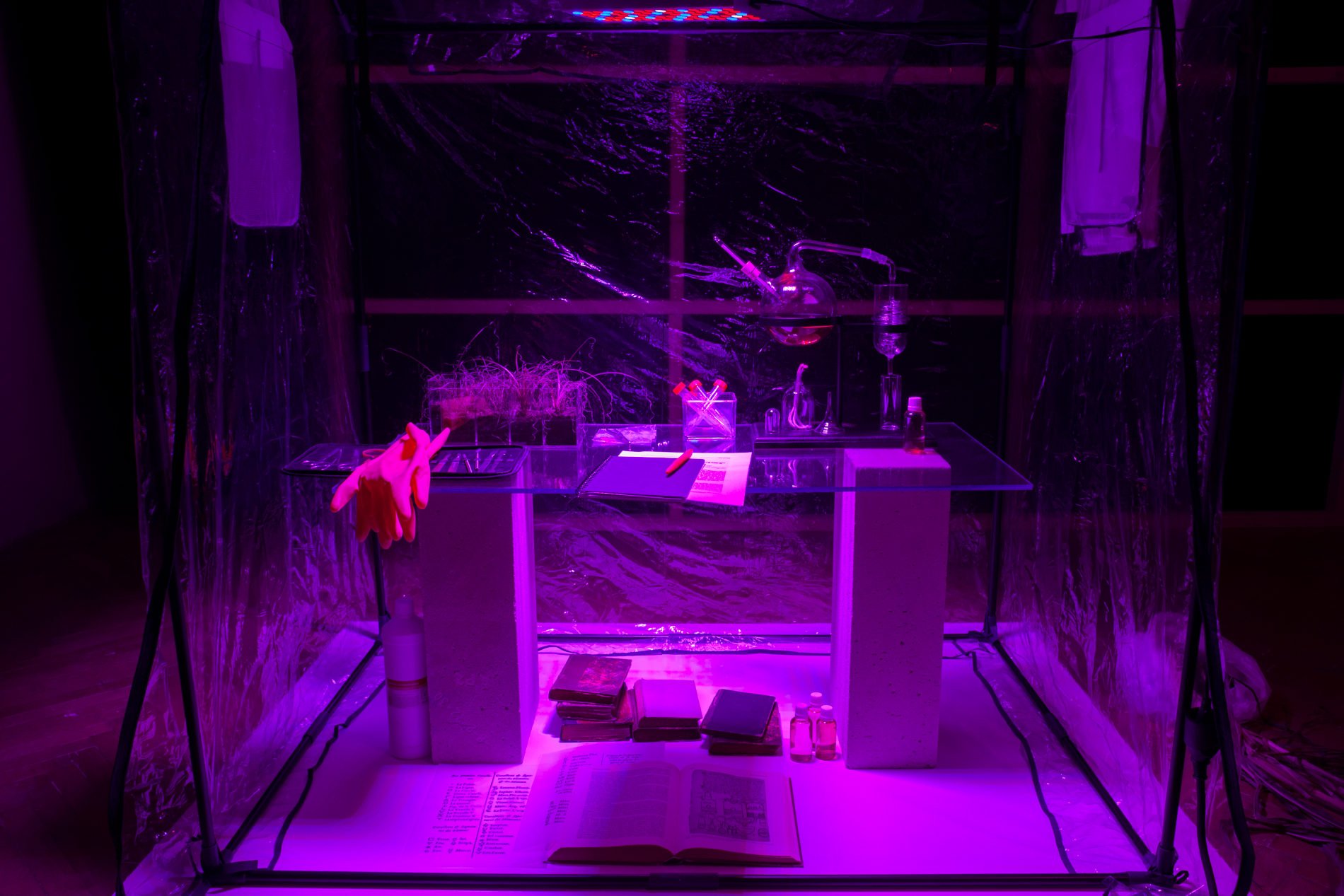How are crops and people going to react to the unavailability of industrial fertilisers? Phosphorus is an essential element for all living beings and also one of three main components of the synthetic fertilisers current agriculture depends on. Prior to human intervention, wild plants developed strategies to secure this scarce nutrient, such as evolving extensive root systems or excreting chemicals to liberate it from the soil. Assuming continuing abundance of synthetic fertilisers and easy access to phosphorus, these abilities were traded in by breeders for fast growth in many cultivars. However, phosphate rock, the primary source of phosphorus, is a finite resource. It took 10–15 million years to form and extraction is currently reaching its limits, with the maximum extraction rate – peak phosphorus – estimated in 2030.
Alchemist Hennig Brand takes urine that has been set aside for several days, and boils it until it thickens and a layer of red grease forms on top. After removing this layer he allows the remaining substance to cool down, separating the bottom part containing precipitated salts and the dark mass on the surface. The salt is removed and the red grease is mixed back in. Brand cooks this mixture vigorously for 16 hours until a white steam starts to evaporate, followed by oil and then a luminescent substance. Instead of the desired Philosopher's Stone, Brand first isolated phosphorus by distillation in 1669.
Tipping point
Urine, bones and teeth, nucleic acids, and a fertiliser. Phosphorus is an irreplaceable biogenic element that is impossible to be created artificially. The name of the element refers to the personification of the planet Venus in Greek mythology in the form of the Morning Star that brings light. It is extremely flammable and used as an incendiary agent in matches. Industrially, it is obtained from phosphate rocks, a group of sedimentary rocks with phosphorus forming over half of their mineral contents. One of these rocks is called apatite, a calcium phosphate, whose alleged healing properties include deflecting negative energy, enhancing communication skills, and increasing motivation and creativity.
Deposits of phosphate rocks have been forming on our planet for 10 to 15 million years providing a non-renewable resource. The so-called peak phosphorus, after which the extracted quantities will only decrease due to the unavailability of the element, is predicted to occur in 2030. In addition to the quantity, the quality of the extracted material is also declining, with increasingly lower concentrations of phosphorus at the expense of unwanted clays and heavy metals. This in turn leads to the employment of more complex and costly forms of extraction, for example from the seabed. The imaginary landscape that stretches beyond this tipping point is represented by AI-generated images from depleted mines in Estonia, Nauru, Kiribati and Florida, combined with those in Morocco, Australia and the Western Sahara, where the resources are inevitably running out.
Nitrogen (N), phosphorus (P) and potassium (K), are the main ingredients in synthetic fertilisers on which, along with other high energy inputs, the current global agricultural systems depend. At most a quarter of the phosphorus in fertilisers is used by plants, while the rest remains in the soil, from which the fertiliser is washed into surface waters. This causes pollution and, due to so-called eutrophication, increased levels of phosphorus and nitrogen, plankton overgrowth and algal blooms.
Creators of plants
However, some phosphorus remains stored in the soil due to long-term over-fertilization, but it is difficult for plants to obtain it. Plant cultivars currently used in agriculture are dependent on the overuse of synthetic fertilisers, as they have been cultivated for conditions of unlimited access to nutrients in surplus quantities. This distinguishes them from wild and landrace varieties, which had to develop different strategies to secure minerals, including extensive root systems, the secretion of chemicals that release phosphorus from the soil, or symbiosis with fungi. Self-preservation functions have been traded for rapid growth. At the boundary between the natural and the artificial, attempts are now underway in microbiology to reverse this process. A gene responsible for the plant’s ability to search for phosphorus using its fine roots has been identified in an old rice variety and this genetic trait has subsequently been bred into modern rice varieties. The potential of microbes that live naturally on the root system of millet and that act as natural fertilisers is also explored.
Science and knowledges
At Fertiliser Rehab plants recover from their addiction and break free from the cycle of growth for growth's sake introduced at the expense of essential, life-sustaining functions. When performing alchemical experiments, a parallel process takes place through the person who performs them. The installation then incorporates controlled procedures and scientific environment with alchemical experiments and spontaneous processes occurring in nature, such as plant hybridization, without creating hierarchies. It combines thinking articulated in the language of alchemical symbolism, the currently standardized way of communicating scientific knowledge through peer-reviewed journals, and speculation.
How will plants and humans actually react to the lack of phosphorus? An answer can have the form of experimentation with plant properties, their creation and re-creation. Another option is to try to obtain phosphorus from sources other than non-renewable phosphate rocks, for example by recycling urine. Or perhaps the inevitable transformation of society, realizing the limits of growth and going to a rehab will do the trick?



